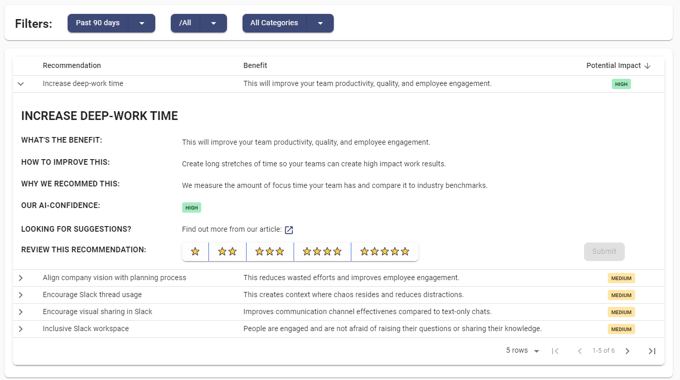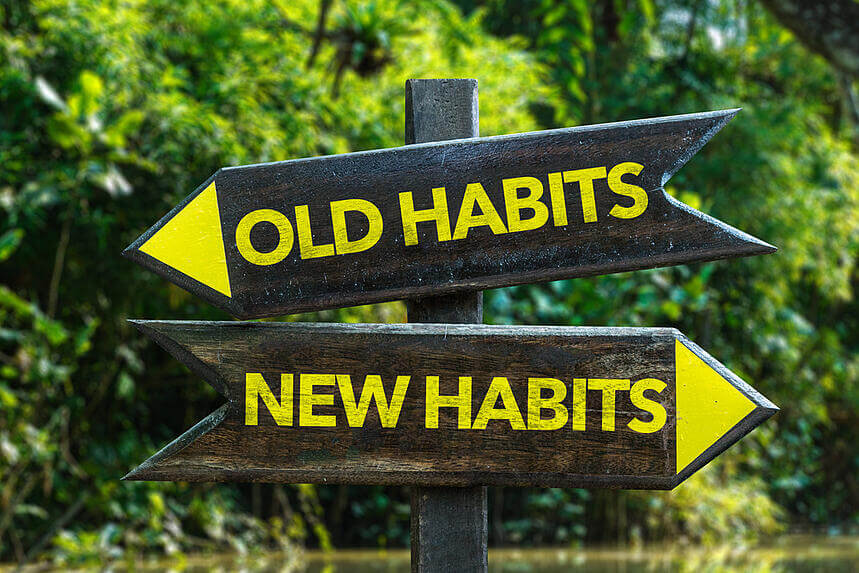Digital notifications and why can't we remove all the distractions?
Multitasking and interruptions are stealing our focus time, and deep work state. Read more about turning off digital notifications and distractions.
Learn what is the difference between deep work and shallow work and create your own deep work routine by minimizing shallow work and distractions.
Because you are reading this article you have most certainly heard the term deep work. Now you might be wondering how to get more deep work hours into your day? Before we share the ways how to get more deep work, let's look at the definitions of deep work, and its counterpart, shallow work.
How can you distinguish shallow work from deep work so you can device a routine to increase productivity?
Let's start by asking ourselves a few quick questions first:
Your answers to all of the above tells you when you are doing shallow work instead of deep work. Especially the number of interruptions being a huge distractor.
Workplace distractions statistics show that with the rise of digital technology, remote and hybrid working the productivity is suffering and burn out is on the rise. Research also shows that most employees and teams get their best work done during ‘deep work time’.
Carry on reading to find 7 most common symptoms for shallow work and learn 5 wayts how to get more deep work to do your best quality work.
In his book, Deep Work: Rules For Focused Success in a Distracted World, Cal Newport presented ground-breaking strategies on how to increase your deep work productivity while being mindful of getting caught in traps of shallow work time.
By the definition:I build my days around a core of carefully chosen deep work, with the shallow activities I absolutely cannot avoid batched into smaller bursts at the peripheries of my schedule. Three to four hours a day, five days a week, of uninterrupted and carefully directed concentration, it turns out, can produce a lot of valuable output. (Cal Newport)
Here's our top pick for the 7 commong symptoms of shallow work, and how you feel while doing it. If you answer yes to one or more of these, you clearly do shallow, low value work as part of your daily routine.
How many did you answer with yes? Don't worry, we all do shallow work time to time.
At Flowtrace, we have benchmarked our clients teams, when they average two to three deep work hours per day, then employee engagement scores (eNPS) increase. In short, employees become more satisfied in their work and the work gets done faster.
On the other hand, if you find that you have less than an hour of deep work time per day, you are likely suffering from distraction overload which is leading to shallow work time.
Workplace distractions are a growing problem. Team productivity, employee engagement and cross-functional collaboration are all negatively impacted
(Workplace Distraction Statistics by Statista)
So you are confident you experience the lack of deep work time and feel the impact of constant shallow work? Read on how to regain the control of deep work time with out top picks:

Jumping in and out of your inbox to check your mail may feel satisfying, but it's unlikely to have a major impact on the business. You need to find balance in your workday to do important projects as well as the necessary admin. Most importantly you need to prioritise the work that needs to be done to push strategic objectives forwards.
Every task that lands on your project management tool should have a clear description and processes attached. In order to improve productivity and minimise disruptions, explain related goals and KPIs and how each stakeholder fits into the plan. When handing over tasks, make sure the assignee has all of the required information, including expected delivery dates. The ‘what and by when’ is critical to optimizing deep work time.
Evaluate at what time of day you're most productive and dedicate at least two to three hours of uninterrupted time to work on a single project during this time. It may be first thing in the morning or late in the afternoon - the key is that you do it at a time when you feel the most energetic. Every time you break your flow and switch attention you lose about 25 minutes on average, so try to avoid multitasking at all costs.
Consider introducing ‘chat notification’ office hours to avoid checking messages out-of-hours. Set a time when you deliberately check your communication and collaboration tools. For all other times, either turn off your notifications and mark yourself as Away or switch off the app completely. Of course, you need to communicate this to your team which can be as simple as changing your status update to “Working on project X, back at 2pm”.
It's hard to ask for help when you need it, but if there's a lot on your plate, you need to speak up. Ask your team and see if anyone has free time to learn something new and help you with the project. Do this without distracting them though.
You can read more tips and examples for deep work from our Knowledge Centre. We have also listed most common reasons for workplace distractions so you can identify, and get rid of them.

No matter where we work, we are all exposed to a myriad of workplace distractions. Continual interruptions and distractions can be costly in both productivity and objectives being achieved, and are proven to be responsible for hindering company growth.
Which workplace distractions below most impact your productivity?
The watercooler has always been a great place to catch up with your colleagues about the company and recent gossip. This could be a reason why distractions in the workplace statistics point to colleagues as a significant distraction factor. Up to 80% of employees say that chatty colleagues are the reason for a lack of focus on the job. Distracted employees are far less productive and more often fail to complete projects on time.
Poor quality meetings is now one of the biggest reason we become distracted and unproductive. On average, employees spend 31 hours a month in meetings with no tangible value, with 71% of employees saying they felt disengage due to poor meetings. Of all the office distractions, meetings are among the most obvious examples of losing productivity but also one of the easiest to improve.
We all have to multitask from time to time, but managing the time given to each task can be just as tricky as managing distractions at work. We would like to think our skills and experience are enough to do this effectively, however when it comes to deep work the science shows that the brain is only capable of doing one thing at a time. So while you think you are getting more done by multitasking, what you are actually doing is reducing your productivity and increasing your chance to make mistakes.
It is how we stay connected to the world and take our work on the, but the number of device notification we receive daily is increasing. Workplace technology distractions statistics put smartphones right at the top of the list of things that make us less productive, and it’s something that we all know we can handle better. More than 50% of employees say they are regularly distracted by their phones and spend hours each day on them. Check your screen time and set yourself a target to reduce this, whilst turning off some notifications during deep work time.
Email is an important part of business communication and is still widely used for sharing important information with our peers. But the continuous checking for new mails in our inbox is a work distraction we do out of habit. Email was never intended to be a dialogue or something that requires constant attention. It, however, has become a productivity killer, with 7 out of 10 employees saying that emails have a detrimental effect on their work quality.
Prioritizing deep work means you will be working alone for extended periods of time. This is not always the most sustaible way going forward. Depending on your role, and needs of given project, working with others can unleash the power of “productive collaboration”.
Luckily, committing yourself, or your team to a deep work doesn’t mean we’ll be unable to reap the benefits of collaboration. On the contrary, they feed into one another beautifully: time spent learning from others can be explored in more depth once we’re alone in deep work mode.
Additionally, you can practice “collaborative deep work” in which you work with someone or a small on a problem, both pushing each other towards great outputs along the way.
Find out more about how Flowtrace can improve deep work time, team engagement and cross functional collaboration.
Multitasking and interruptions are stealing our focus time, and deep work state. Read more about turning off digital notifications and distractions.
Enhance deep work productivity with meeting analytics. Learn how to reduce unnecessary meetings and boost focus to drive progress and innovation.
We reveal the importance of focus in the workplace and provide insights into the consequences of employees struggling to focus.